 |
| Image credit: Pexels |
Welcome to the mesmerizing world of cats and catnip! Cats, those enigmatic and beloved furry companions, share a unique bond with catnip. In this informative article, we will delve deep into the mysterious connection between cats and catnip. Get ready to uncover 25 captivating aspects of this topic, explore frequently asked questions, and gain expert insights that will leave you with a newfound appreciation for these feline friends.
Cats and Catnip: A Purr-fect Combination
Cats and Catnip – it's a combination that has fascinated pet owners and animal enthusiasts for centuries. Here, we'll explore the various facets of this fascinating relationship.
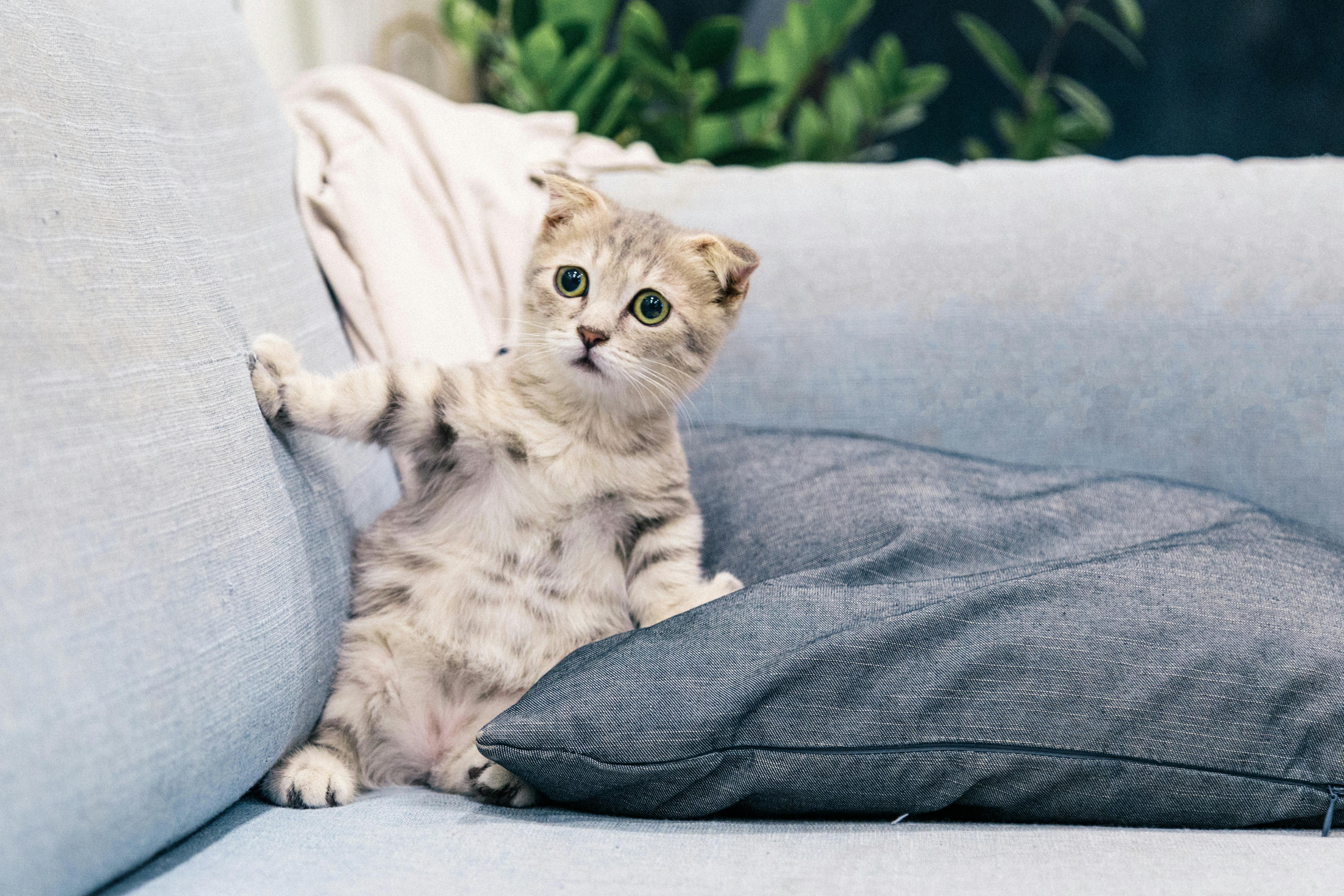 |
| Image credit: Pexels |
The Origin of Catnip
Catnip, scientifically known as Nepeta cataria, has a rich history dating back centuries. Its name is a combination of "cat" and "nip," which perfectly encapsulates its effects on our feline friends.
Catnip's origins can be traced to Europe and Asia, where it is native. This herbaceous plant thrives in temperate climates and is characterized by its heart-shaped, green leaves and clusters of white or lavender flowers.
Throughout history, catnip has been cultivated for various purposes. Its first documented use was as a medicinal herb. Ancient herbalists and healers recognized its potential to alleviate ailments in humans. It was often brewed into teas to treat digestive issues, insomnia, and even as a mild sedative.
The association between cats and catnip began to gain attention in medieval Europe. People observed that cats exhibited peculiar behavior when they came into contact with the plant. They would roll, purr, and rub against it with a level of enthusiasm rarely seen in other situations. This curious reaction led to the belief that catnip possessed magical or mystical properties.
In the English language, the term "catnip" became widely recognized for this plant due to its strong connection with cats. The word "nip" in the name refers to the pinching or biting behavior that cats often display when exposed to catnip. It's as if they are trying to capture the essence of the plant.
So, while catnip's origin as a plant is firmly rooted in the soil of Europe and Asia, its cultural significance and association with cats have made it a household name in the English language. Today, catnip continues to captivate both humans and their feline companions, adding a touch of magic to our lives.
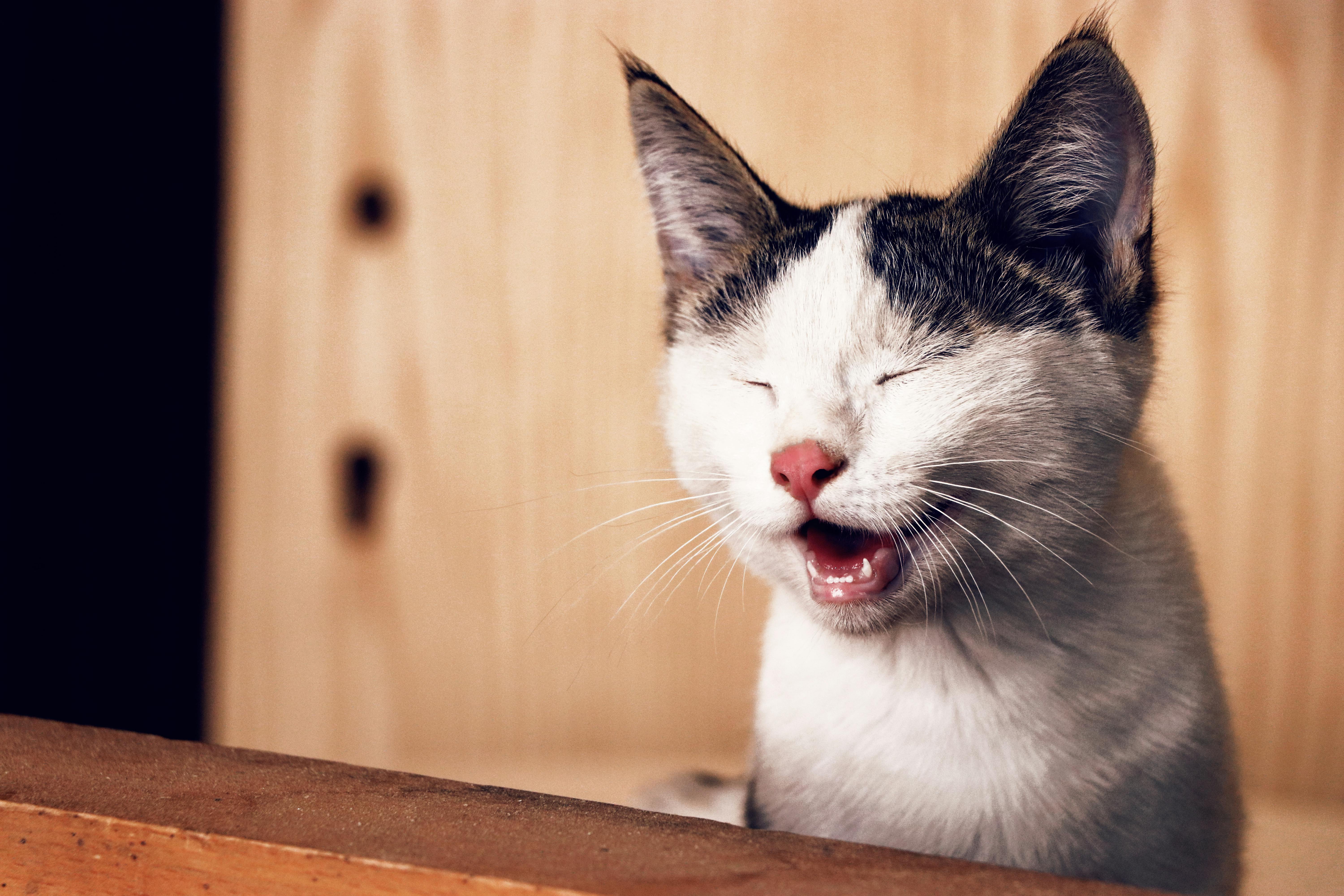 |
| Image credit: Pexels |
How Catnip Affects Cats
Catnip contains a compound called nepetalactone, which has a euphoric effect on cats. When cats come into contact with catnip, they may exhibit behaviors such as rolling, rubbing, purring, and even hyperactive playfulness. Here's a closer look at how catnip affects cats:
1. Initial Attraction: The interaction typically begins when a cat detects the scent of catnip. This scent is released when the leaves or stems of the plant are bruised or crushed.
Cats may show immediate interest, often sniffing, and investigating the source of the scent.
2. The Sniffing Phase: Upon sniffing catnip, a cat's behavior may start to change. They may become more alert and focused.
Some cats may engage in what appears to be a sniffing frenzy, repeatedly inhaling the scent.
3. The Reaction: After the initial sniffing phase, most cats will begin to exhibit a range of behaviors, including:
Rolling and Rubbing: Cats may roll on the ground and rub their bodies against the source of catnip. This behavior is often accompanied by purring.
Playfulness: Cats may become unusually playful, chasing imaginary prey or toys with heightened enthusiasm.
Hyperactivity: Some cats may engage in zooming around the room, darting from one place to another, or engaging in sudden bursts of energy.
Vocalization: Cats may meow or vocalize more than usual while under the influence of catnip.
Salivation: In some cases, cats may drool when exposed to catnip, although this is less common.
4. The Duration: The effects of catnip are usually temporary, lasting anywhere from 10 to 30 minutes. Afterward, cats gradually return to their normal state.
5. The Cool-Down: Once the catnip's effects wear off, cats often enter a cool-down phase, where they may appear calm or even sleepy.
6. The Refractory Period: After indulging in catnip, cats may not respond to it again immediately. They seem to develop a temporary tolerance or indifference to catnip, and it may take some time before they react to it again.
It's important to note that not all cats are equally affected by catnip. Sensitivity to catnip is inherited genetically, and it's estimated that about 50-70% of cats are responsive to it. Kittens and very young cats usually don't respond until they are a few months old.
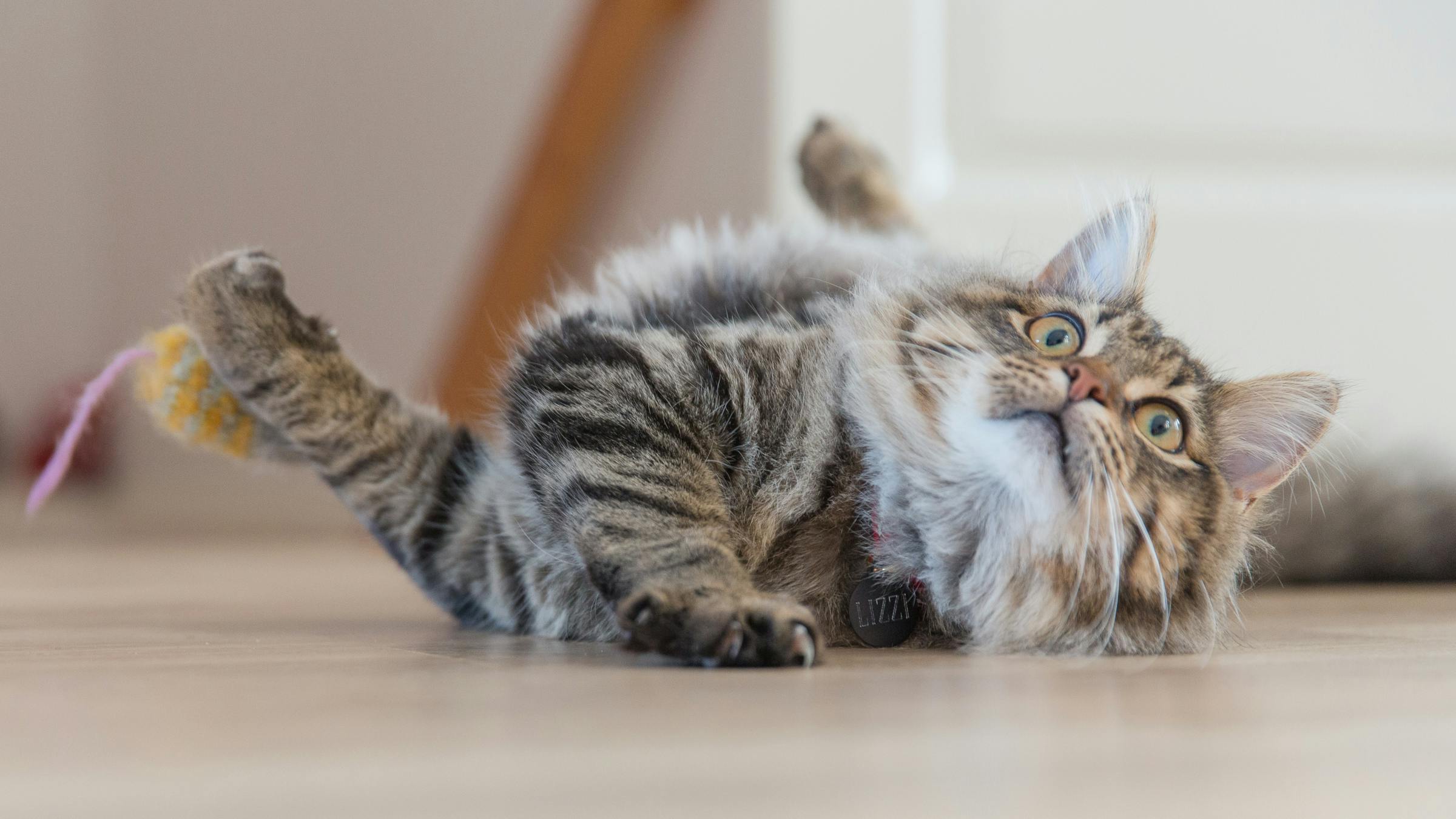 |
| Image credit: Pexels |
Catnip's Impact on Different Cat Breeds
Interestingly, not all cats react the same way to catnip. While some cats go wild, others may remain unaffected. We'll explore the genetic factors that determine a cat's response to catnip. Here's a closer look at how catnip affects various feline breeds:
1. Responsive Breeds: Some cat breeds are highly responsive to catnip. They tend to exhibit more pronounced and enthusiastic reactions when exposed to it.
Breeds like Siamese, Burmese, and Abyssinian cats are often known to be particularly sensitive to catnip.
When these breeds encounter catnip, they may display intense playfulness, vocalization, and energetic behavior.
2. Moderately Responsive Breeds: Many cat breeds fall into the category of moderate responsiveness to catnip.
Breeds such as Maine Coons, Ragdolls, and Scottish Folds typically show a moderate reaction to catnip.
Cats from these breeds may engage in playful behavior and show interest in catnip, but their reactions may not be as intense as those of the highly responsive breeds.
3. Low or Non-Responsive Breeds: Some cat breeds, or individual cats within breeds, have a low or non-existent response to catnip.
Breeds like Persians and British Shorthairs are often less sensitive to catnip.
Cats from these breeds may show little to no interest in catnip, and it may have little to no effect on their behavior.
4. Genetic Factors: The variation in catnip sensitivity is largely influenced by genetic factors. Cats inherit their sensitivity to catnip from their parents.
Kittens from two catnip-sensitive parents are more likely to be sensitive themselves, while kittens from parents with mixed sensitivities may also exhibit varying responses.
5. Age and Experience: A cat's age can also impact its response to catnip. Kittens and very young cats may not react to catnip until they are a few months old.
Additionally, a cat's prior exposure to catnip can affect its response. Cats that have been exposed to catnip regularly may develop a temporary tolerance and show reduced reactions over time.
6. Individual Variations: It's essential to remember that even within breeds, there can be individual variations in how cats respond to catnip.
Some cats may be highly sensitive, while others from the same breed may show a minimal response.
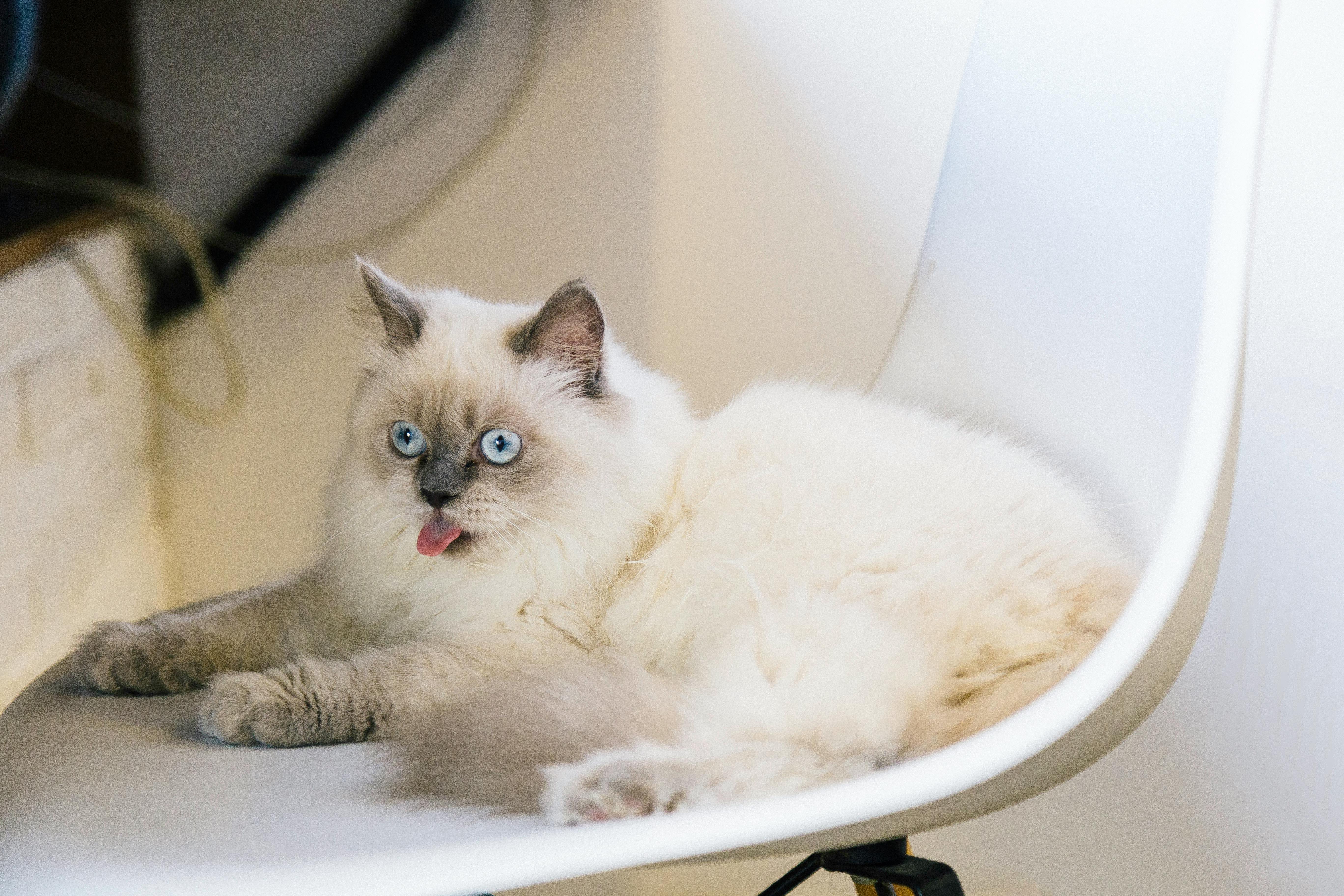 |
| Image credit: Pexels |
The Role of Catnip in Cat Toys
Catnip is a common ingredient in cat toys. We'll delve into the role of catnip in stimulating a cat's interest in toys and how it can enhance their playtime.
1. Attracting Interest: Catnip-infused toys are designed to pique a cat's curiosity. The scent of catnip acts as a powerful attractant, drawing cats to the toy.
Cats will often approach catnip toys with heightened interest, sniffing, pawing, and examining them closely.
2. Enhancing Playfulness: Catnip toys are known for their ability to make playtime more engaging and enjoyable.
When cats interact with these toys, they may become more playful and enthusiastic in their movements.
The presence of catnip can lead to spirited games of batting, pouncing, and chasing, which provide essential exercise for a cat's physical and mental well-being.
3. Mental Stimulation: Engaging with catnip-infused toys offers mental stimulation for cats. The act of hunting and capturing the "prey" (the catnip toy) can be mentally satisfying.
Cats often exhibit problem-solving behaviors while playing with these toys, such as trying to "catch" the elusive scent.
4. Stress Relief: Catnip has mild sedative effects on some cats, which can help alleviate stress and anxiety.
Cats may find comfort and relaxation in the presence of catnip, making it a valuable tool for reducing anxiety in certain situations.
5. Bonding Opportunity: Playing with catnip toys can also be a bonding experience between a cat and its owner.
Engaging in interactive play with these toys allows for quality one-on-one time, strengthening the bond between the cat and its human companion.
6. Safe and Non-Toxic: Catnip is generally considered safe and non-toxic for cats when used in moderation.
Unlike some other substances, catnip does not pose a risk of addiction or harm to cats. They can enjoy it without adverse effects.
7. Variety of Options: Catnip comes in various toy forms, including stuffed mice, balls, plush shapes, and more.
This variety allows cat owners to choose toys that match their cat's preferences and play style.
8. Long-Lasting Appeal: Catnip toys can maintain their appeal over time, even if a cat becomes temporarily tolerant to catnip.
Cats may continue to enjoy the tactile and interactive aspects of the toy even when the catnip's scent diminishes.
 |
| Image credit: Pexels |
Cats and Catnip: The Health Benefits
Beyond playfulness, catnip also offers some health benefits for cats. We'll discuss how catnip can help alleviate stress and anxiety in felines.
1. Stress and Anxiety Reduction: Catnip has mild sedative properties that can help calm nervous or anxious cats.
In humans, catnip tea is known to induce relaxation and alleviate stress and anxiety. It can be a soothing remedy after a long day.
2. Digestive Aid: Catnip has a long history of use as a digestive aid. It can help alleviate digestive discomfort, including gas, bloating, and indigestion.
In both cats and humans, catnip tea may promote healthy digestion and ease gastrointestinal issues.
3. Pain Relief: Catnip has been used traditionally to alleviate minor aches and pains, including headaches.
It can be applied topically as a poultice or used in herbal preparations for pain relief.
4. Mild Sleep Aid: Catnip's calming effects extend to promoting better sleep in both cats and humans.
Drinking catnip tea before bedtime can potentially improve sleep quality and help with insomnia.
5. Anti-Inflammatory Properties: Catnip contains compounds with anti-inflammatory properties that can be beneficial for various conditions.
In cats, catnip can help reduce inflammation associated with arthritis.
6. Respiratory Health: Catnip has been used to relieve respiratory issues in both cats and humans.
Catnip tea can help ease symptoms of the common cold, such as congestion and coughing.
7. Mosquito Repellent: Catnip has demonstrated mosquito-repelling properties in studies.
In some regions, catnip plants are grown to help deter mosquitoes from the area.
8. Anti-Bacterial and Anti-Fungal: Catnip exhibits antimicrobial properties that can help combat bacteria and fungi.
Catnip essential oil is sometimes used in topical applications for wound healing.
9. Menstrual Pain Relief: In traditional herbal medicine, catnip has been used to alleviate menstrual cramps and discomfort in women.
10. Insect Bites and Stings: Catnip can be applied topically to insect bites and stings to reduce itching and inflammation in humans.
11. Mood Elevation: Some people find that catnip can help improve their mood and reduce symptoms of mild depression or irritability.
12. Natural Hair Care: Catnip-infused hair rinses are used to promote hair health, shine, and manageability.
It's important to note that while catnip offers various health benefits, its effects can vary from person to person and from one cat to another. When using catnip for medicinal purposes, it's advisable to consult with a healthcare professional or veterinarian to ensure it's appropriate for your specific situation. Additionally, moderation is key, as excessive use of catnip can lead to diminishing effects over time.
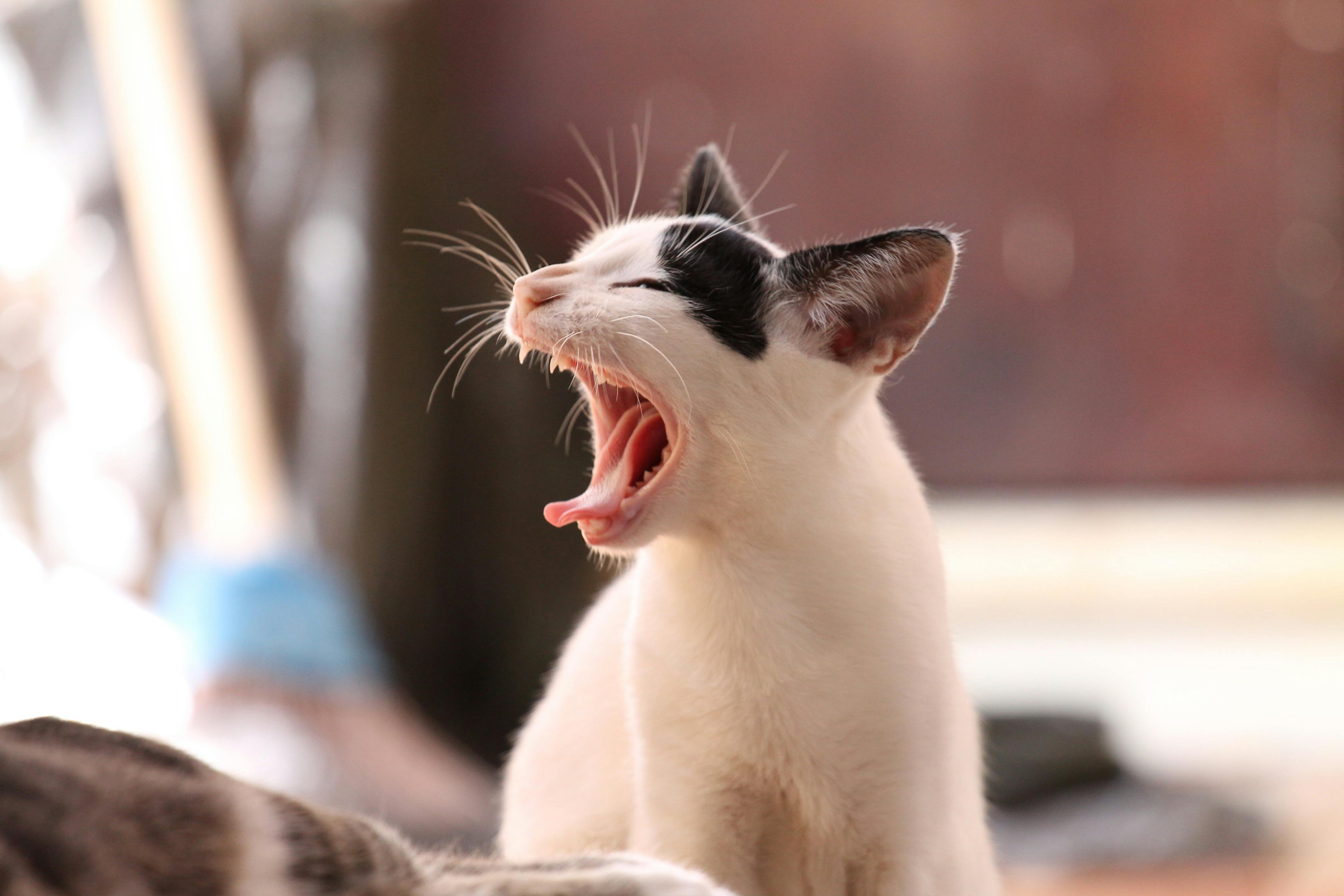 |
| Image credit: Pexels |
The Science Behind Catnip
Want to know the science behind why cats react the way they do to catnip? We'll break down the chemical reactions happening in your feline friend's brain.
Nepetalactone: The Active Compound: The secret to catnip's allure lies in a specific compound called nepetalactone, found in the leaves, stems, and seeds of the catnip plant.
Nepetalactone is a volatile oil, meaning it can easily evaporate and become airborne, which is why cats can detect it even from a distance.
The Sensory Experience: When cats encounter catnip, they typically react by sniffing, licking, and chewing the plant or catnip-infused items.
Nepetalactone binds to receptors located in the sensory neurons of a cat's nasal tissue, particularly in the olfactory epithelium.
This binding triggers a sensory response that stimulates sensory neurons and sends signals to the cat's brain.
The Brain's Reaction: Nepetalactone's interaction with a cat's sensory neurons leads to a cascade of neurological reactions.
The hypothalamus and amygdala, two regions in the brain, are notably affected by catnip exposure.
These brain areas play a crucial role in regulating emotions, sexual behavior, and certain instinctual responses.
Behavioral Responses: The neurological effects of catnip result in a range of behavioral responses in cats. These may include:
Rolling and Rubbing: Cats often roll on the ground and rub against the source of catnip. This behavior is believed to help them spread the scent of the catnip onto their fur.
Playfulness: Many cats become highly playful and energetic when exposed to catnip. They may engage in chasing, batting, and pouncing, often with imaginary "prey."
Hyperactivity: Some cats exhibit hyperactive behavior, such as zooming around the room and darting from place to place.
Purring and Vocalization: Cats may become more vocal and purr more frequently during catnip-induced play.
Interest in Objects: Cats may develop a heightened interest in objects or toys that contain catnip.
Duration of Effect: The effects of catnip are typically temporary and short-lived, lasting anywhere from 10 to 30 minutes.
After this period, cats gradually return to their normal state.
Temporary Tolerance: Cats can develop a temporary tolerance to catnip if exposed to it frequently. This means that the intensity of their reactions may diminish with repeated exposure.
The sensitivity to catnip can return after a period of non-exposure.
 |
| Image credit: Pexels |
Growing Catnip at Home
If you're a cat owner, you might consider growing catnip at home. Learn the steps to cultivate this enchanting herb in your garden.
Whether you want to provide a fresh source of catnip for your feline friend or incorporate it into your garden, here's a step-by-step guide on how to grow catnip at home:
1. Choose the Right Location: Catnip thrives in well-draining soil and prefers full sun or partial shade. Select a location in your garden that receives at least 6 hours of sunlight per day.
2. Gather Catnip Seeds or Seedlings: You can start growing catnip from either seeds or young seedlings. Catnip seeds are widely available at garden centers and online. Alternatively, you can purchase young catnip plants at a nursery.
3. Prepare the Soil: Catnip prefers soil that is slightly sandy and well-draining. Prepare the soil by loosening it to a depth of about 12 inches (30 cm).
You can improve soil drainage by adding compost or organic matter to the soil.
4. Plant Catnip Seeds or Seedlings: If you're using seeds, sow them directly into the prepared soil in early spring, spacing them about 18 to 24 inches (45 to 60 cm) apart.
If you're using seedlings, dig a hole large enough to accommodate the root ball and plant them at the same spacing.
5. Watering: Water the newly planted catnip seeds or seedlings thoroughly. Catnip prefers slightly moist soil, so keep the soil consistently damp but not waterlogged.
Once established, catnip is relatively drought-tolerant and doesn't require excessive watering.
6. Mulch: Apply a layer of mulch around the catnip plants to help retain moisture, regulate soil temperature, and discourage weed growth.
7. Pruning and Harvesting: Catnip plants will grow to a height of about 2 to 3 feet (60 to 90 cm) and produce clusters of small white or lavender flowers.
Prune the plant regularly to encourage bushier growth and prevent it from becoming leggy.
You can begin harvesting catnip leaves and flowers once the plant is established. To do so, simply snip off the desired parts with scissors or pruning shears.
8. Drying Catnip: To preserve catnip for your cat's enjoyment, dry the harvested leaves and flowers.
Hang them upside down in a cool, dry, and well-ventilated area until they are thoroughly dry. This can take a few weeks.
Once dry, store the catnip in an airtight container to maintain its potency.
9. Catnip for Cats: You can offer dried catnip leaves and flowers to your cat by sprinkling them on scratching posts, toys, or play areas.
Cats often enjoy rolling in and rubbing against catnip-infused items.
10. Enjoy Your Garden: Catnip not only benefits your feline friend but can also be a charming addition to your garden with its attractive foliage and blooms.
Growing catnip at home is a rewarding experience that allows you to provide your cat with a fresh and natural source of enjoyment while enhancing your garden's beauty. With proper care, your catnip plants can thrive and provide you and your cat with endless delight.
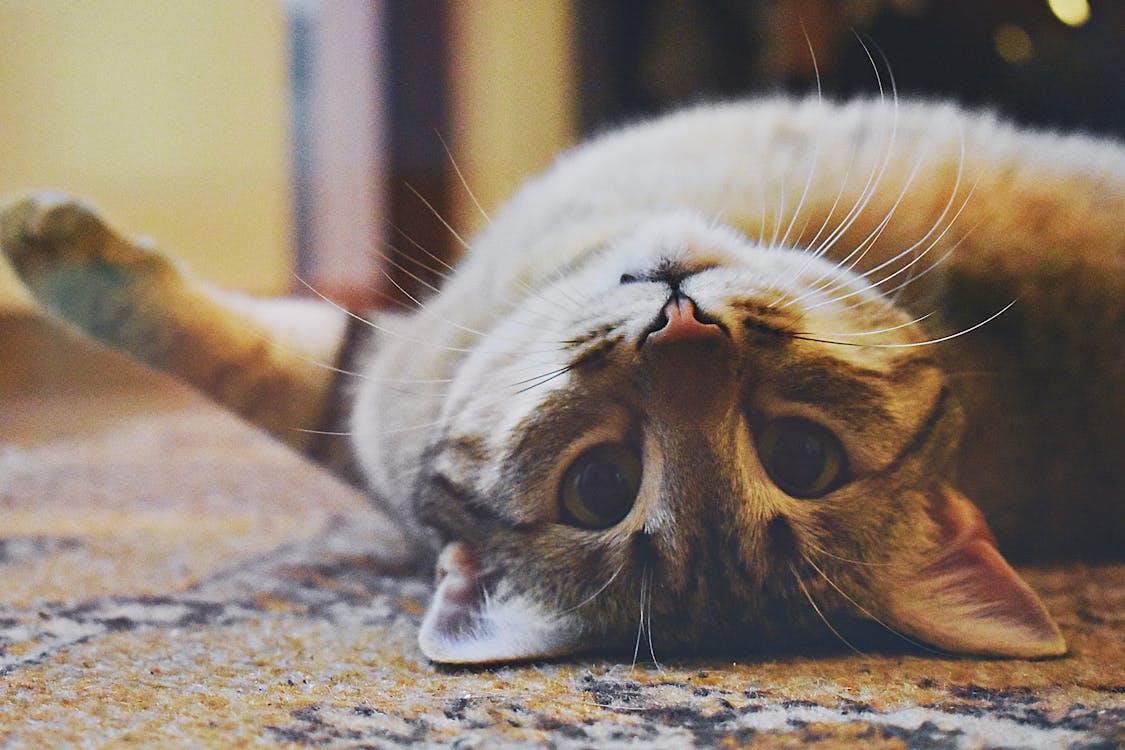 |
| Image credit: Pexels |
Catnip as an Insect Repellent
Catnip isn't just for cats; it can also repel insects. Discover how catnip can serve as a natural, non-toxic insect repellent. Here's how catnip can be used effectively as an insect repellent:
1. Mosquito Repellent: Catnip contains a compound called nepetalactone, which has been found to repel mosquitoes.
You can plant catnip in your garden or place potted catnip plants on your patio or windowsills to deter mosquitoes from the area.
2. Natural Alternative to Chemical Repellents: Catnip provides a natural and non-toxic alternative to chemical insect repellents, making it safer for both humans and pets.
Unlike chemical sprays, catnip doesn't release harmful toxins into the environment.
3. Companion Planting: Planting catnip alongside other garden plants can help protect them from insect pests.
For example, catnip planted near tomatoes can deter aphids, while catnip near roses can discourage Japanese beetles.
4. Repelling Fleas and Ticks: Catnip can also help deter fleas and ticks, making it a useful addition to your garden or around your pet's outdoor play area.
You can crush fresh catnip leaves and rub them on your pet's fur to provide some protection against these pests.
5. DIY Catnip Repellent Spray: You can create a catnip repellent spray by steeping catnip leaves and stems in boiling water to make a strong infusion.
After the infusion cools, strain it and pour it into a spray bottle. This homemade repellent can be applied to your skin or clothing to ward off insects.
6. Catnip Essential Oil: Catnip essential oil, derived from catnip plants, can also be used as an insect repellent.
Dilute a few drops of catnip essential oil with a carrier oil and apply it to exposed skin when spending time outdoors.
7. Catnip for Cats and Insect Control: While catnip is known for its effects on cats, it can indirectly help control insects by attracting cats to certain areas.
Cats are natural hunters, and their presence can deter rodents and insects from your property.
8. Indoor Use: You can also use dried catnip leaves in sachets or as a natural pest control method indoors.
Place sachets in areas where you want to discourage insects, such as in closets, pantries, or near windows.
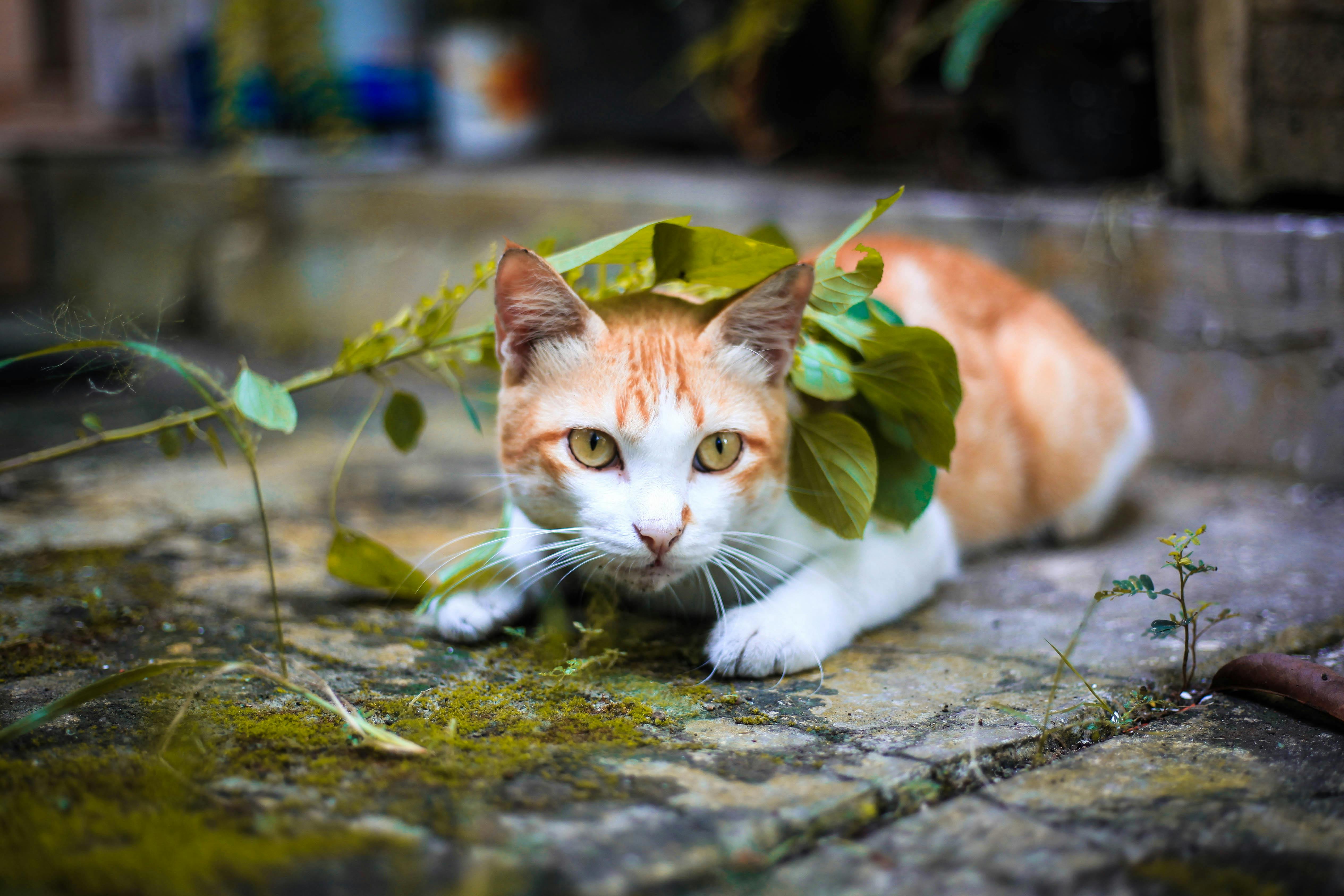 |
| Image credit: Pexels |
Catnip Tea for Humans
Catnip isn't just for cats; humans can enjoy it too! We'll explore the soothing properties of catnip tea and its benefits for humans. Here's how to prepare and enjoy catnip tea:
Ingredients:
- 1-2 teaspoons of dried catnip leaves (or 1 catnip tea bag)
- 1 cup of boiling water
- Honey or lemon (optional, for flavor)
Instructions:
1. Gather Catnip: You can use dried catnip leaves, which are readily available in health food stores, herbal shops, or online. Alternatively, you can use a catnip tea bag for convenience.
2. Boil Water: Boil a cup of fresh, clean water. Allow it to cool slightly for a minute after reaching a rolling boil.
3. Steep the Catnip: Place the dried catnip leaves or tea bag in a teacup.
Pour the hot water over the catnip.
Cover the cup with a saucer or a small plate to trap the volatile oils (nepetalactone) and allow them to infuse into the tea.
Let the catnip steep for about 5 to 10 minutes, depending on your preference for strength.
4. Strain and Serve: Remove the saucer or plate, and carefully strain the tea to remove the catnip leaves or tea bag.
If you wish, add a teaspoon of honey or a squeeze of lemon for extra flavor. This is entirely optional and depends on your taste.
5. Enjoy Your Catnip Tea: Your catnip tea is now ready to drink. Sip it slowly and savor the soothing and calming effects.
Catnip tea offers a gentle way to unwind and relax without the drowsiness associated with some stronger sedatives.
It's essential to note that while catnip tea is generally considered safe for most adults, individual reactions can vary. As with any herbal remedy, it's advisable to consult with a healthcare professional, especially if you have any underlying medical conditions or are pregnant or nursing. Overall, catnip tea provides a soothing and pleasant way to unwind and enjoy the calming effects of this versatile herb.
 |
| Image credit: Pexels |
Catnip Varieties
Did you know there are different varieties of catnip? We'll introduce you to various types and their unique characteristics.
1. Common Catnip (Nepeta cataria): Common catnip is the most well-known variety and is often used for both cat entertainment and as a medicinal herb for humans.
It features heart-shaped, gray-green leaves and produces spikes of small white or lavender flowers.
This variety is the most attractive to cats due to its high content of the active compound nepetalactone.
2. Lemon Catnip (Nepeta cataria citriodora): Lemon catnip is a variation of common catnip with a distinct lemony aroma.
It has the same heart-shaped leaves and produces white to pale lavender flowers.
Lemon catnip is also known as "catmint" and is less attractive to cats compared to common catnip.
3. Silver-Edged Catnip (Nepeta cataria 'Variegata'): Silver-edged catnip is prized for its ornamental value with green leaves edged in silver or white.
It has a milder scent compared to common catnip and is often grown for its decorative appearance in gardens.
4. Nepeta x faassenii (Catmint):Catmint is a different species (Nepeta x faassenii) but is closely related to catnip.
It features gray-green foliage and produces clusters of lavender-blue flowers.
Catmint is known for its ornamental value and is less attractive to cats than common catnip.
5. Walker's Low Catmint (Nepeta x faassenii 'Walker's Low'): Walker's Low catmint is a popular cultivar known for its low-growing habit and profusion of lavender-blue flowers.
It's a great choice for landscaping and borders, as it forms a neat, compact mound.
6. 'Six Hills Giant' Catmint (Nepeta x faassenii 'Six Hills Giant'): This catmint variety is known for its larger size, reaching heights of up to 3 feet (1 meter).
It produces abundant lavender-blue flowers and is a favorite among gardeners for its striking appearance.
7. Persian Catmint (Nepeta racemosa): Persian catmint, also known as racemosa catmint, has gray-green leaves and produces spikes of lavender-blue flowers.
It is a low-maintenance variety that's resistant to pests and diseases.
8. 'Blue Wonder' Catmint (Nepeta x faassenii 'Blue Wonder'): 'Blue Wonder' catmint is a compact and low-growing variety with deep blue-purple flowers.
It's well-suited for small gardens or as a ground cover.
9. 'Kit Kat' Catmint (Nepeta x faassenii 'Kit Kat'): 'Kit Kat' catmint is a dwarf variety with aromatic gray-green leaves and lavender-blue flowers.
Its compact size makes it an excellent choice for containers and rock gardens.
When choosing a catnip variety, consider your purpose, whether it's to entertain your cat, enjoy its ornamental value in your garden, or explore its medicinal uses for humans. Each variety has its unique characteristics, and you can select the one that best suits your needs and preferences.
 |
| Image credit: Pexels |
Catnip and Cat Training
Catnip can be a valuable tool in training your cat. Here's how you can incorporate catnip into your cat training efforts:
1. Positive Reinforcement: Catnip can be used as a positive reinforcement tool to reward your cat for good behavior.
For example, after your cat successfully completes a training command, offer a small amount of catnip as a reward. This creates a positive association with the training process.
2. Interactive Toys: Many interactive cat toys come with catnip-infused components, such as mice or balls.
Use these toys during training sessions to engage your cat's interest and motivation. This can be especially effective for teaching agility and hunting skills.
3. Lure and Reward: If you're teaching your cat to perform specific actions, such as coming when called or following a target stick, you can use catnip as a lure.
Show your cat the catnip and use it to guide them into the desired behavior. Once they comply, reward them with a small amount of catnip.
4. Training Sessions Enrichment: Sprinkle a small amount of catnip around the training area to create an enriched training environment.
The presence of catnip can make the training session more engaging and enjoyable for your cat.
5. Encouraging Playfulness: Catnip can be used to stimulate playfulness during training.
Incorporate catnip-filled toys into training sessions to encourage your cat to be active and responsive.
6. Bonding Time: Training sessions that involve catnip can also be a form of bonding between you and your cat.
The positive interaction can strengthen your relationship and trust.
7. Timing and Moderation: It's essential to use catnip in moderation during training. Too much catnip can lead to overstimulation or distraction.
Additionally, timing is crucial. Use catnip at the right moment to reinforce the desired behavior immediately.
8. Individual Preferences: Remember that each cat is unique, and their response to catnip can vary.
Some cats may be highly motivated by catnip, while others may be less interested. Tailor your training approach to your cat's preferences.
9. Consistency: Consistency in training is key to success. Use catnip consistently as a reward or motivator to reinforce positive behaviors.
10. Post-Training Relaxation: After a productive training session, you can offer your cat some catnip to help them relax and unwind. This can create a positive association with the post-training period and make your cat look forward to training sessions.
Incorporating catnip into your cat training routine can make the process more enjoyable for both you and your feline friend. It's essential to be patient and adapt your training methods to suit your cat's personality and preferences. With the right approach, you can harness the allure of catnip to strengthen the bond with your cat and achieve your training goals.
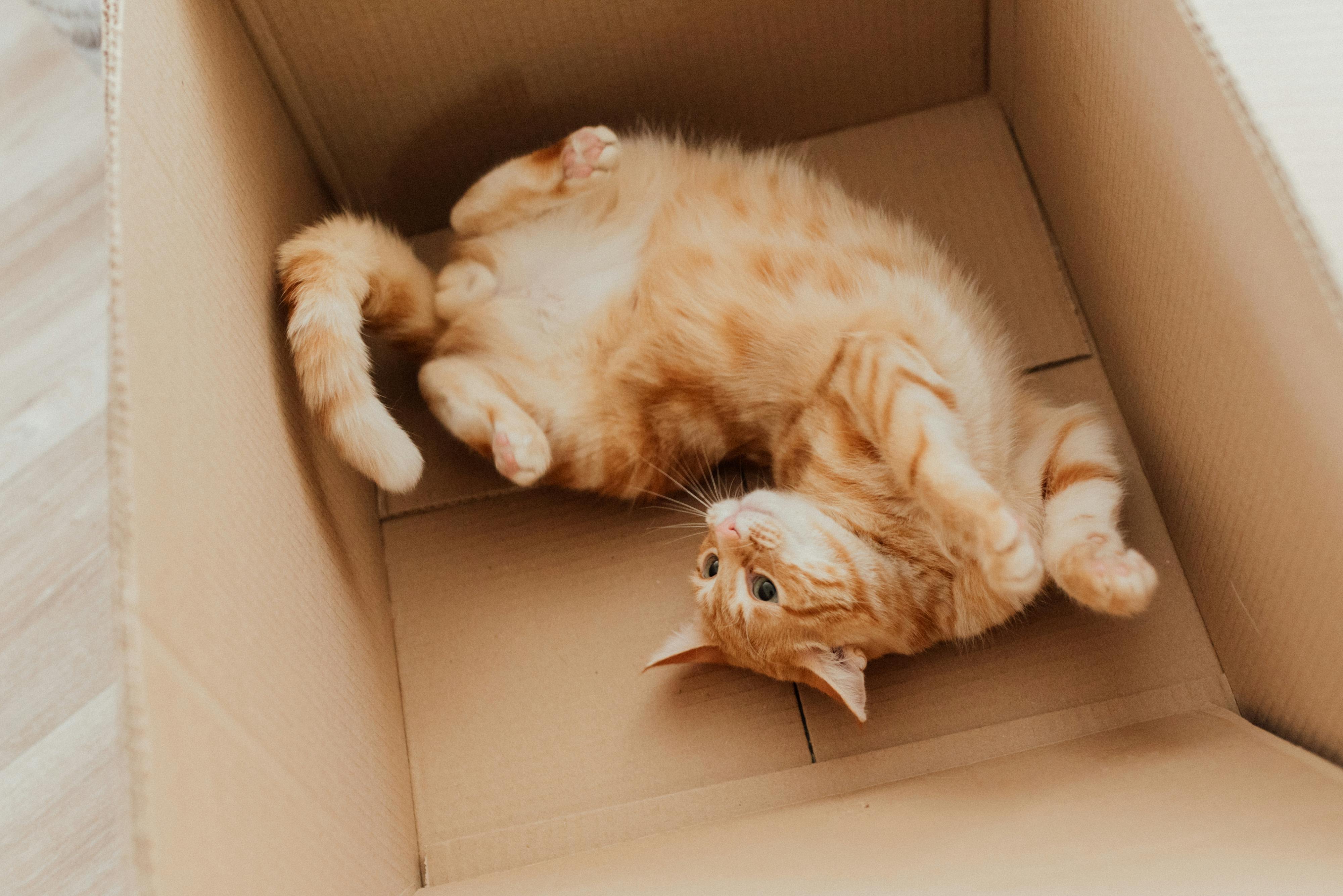 |
| Image credit: Pexels |
FAQs about Cats and Catnip
Now, let's address some common questions about cats and catnip:
Q: Can all cats enjoy catnip?
A: Not all cats react to catnip. It's estimated that about 50-70% of cats are affected by it.
Q: Is catnip safe for my cat?
A: Yes, catnip is generally safe for cats. However, it's best to use it in moderation.
Q: How can I use catnip to train my cat?
A: You can use catnip as a reward during training sessions to reinforce positive behavior.
Q: Can cats become addicted to catnip?
A: Cats can't become addicted to catnip in the way humans can to substances. They may, however, lose interest with frequent exposure.
Q: Can I grow catnip indoors?
A: Yes, catnip can be grown indoors in pots. Ensure it gets plenty of sunlight.
Q: Does catnip have any side effects?
A: Catnip is generally safe, but in large quantities, it may cause mild digestive upset in cats.
Conclusion
Cats and catnip – a combination that never ceases to amaze. From its history to its influence on feline behavior and its cultural significance, catnip continues to enchant us all. Whether you're a cat owner or simply intrigued by these captivating creatures, understanding the world of cats and catnip is a delightful journey.
So, the next time you watch your cat roll in delight after encountering catnip, you'll know that you've unlocked a small but magical secret in their world.
@nolacrazycatlady @nolacrazycatlady (linked video on where to get this toy) #catnip #catsoncatnip #etsyfinds #etsybuys #cattoys #calico #doratheexplorer #oneeyegang #oneeyedcat ♬ Rugrats Theme (From "Rugrats") - Just Kids









0 Comments